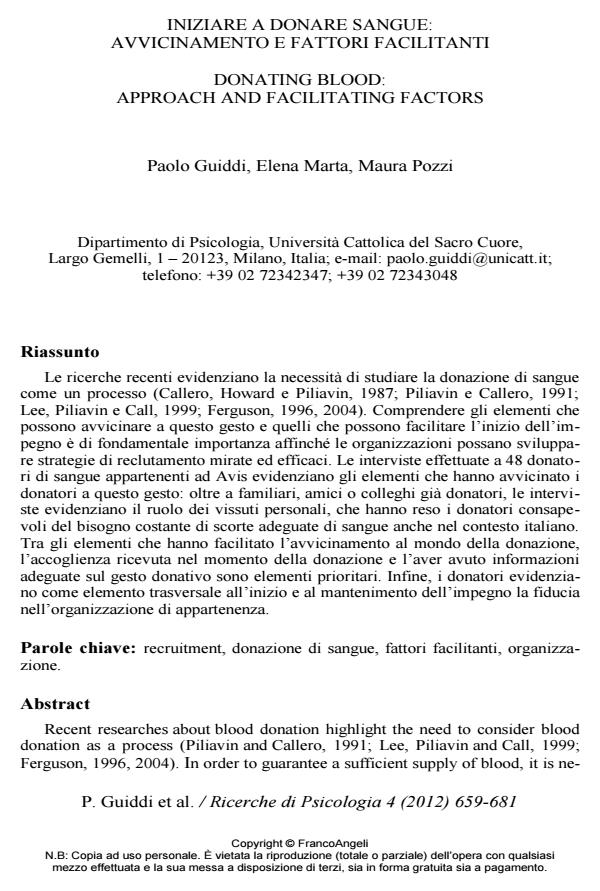Donating blood: Approach and facilitating factors
Journal title RICERCHE DI PSICOLOGIA
Author/s Paolo Guiddi, Elena Marta, Maura Pozzi
Publishing Year 2013 Issue 2012/4
Language Italian Pages 23 P. 659-681 File size 316 KB
DOI 10.3280/RIP2012-004006
DOI is like a bar code for intellectual property: to have more infomation
click here
Below, you can see the article first page
If you want to buy this article in PDF format, you can do it, following the instructions to buy download credits

FrancoAngeli is member of Publishers International Linking Association, Inc (PILA), a not-for-profit association which run the CrossRef service enabling links to and from online scholarly content.
Recent researches about blood donation highlight the need to consider blood donation as a process (Piliavin and Callero, 1991; Lee, Piliavin and Call, 1999; Ferguson, 1996, 2004). In order to guarantee a sufficient supply of blood, it is ne- cessary the understatement of the elements that can bring to this gesture and facilitate the commitment initiation. Thus, the organizations will be able to enhance focused recruitment strategies. They were interviewed 48 blood donors of an Italian Blood Donors Association (Avis). The analysis were conducted using Atlas.Ti, version 5. The results highlight those elements that approached donors to blood donation. In addition to relatives, friends or colleagues already donors, the interviews highlight the role of personal experiences: the donors interviewed are aware of the constant need of blood and they wish to contribute with it. Among the factors that have facilitated the approach to the world of the donation, the welcome the donors received and the suitable information about the gesture of donation are important in order to promote the blood organizations approach. Finally, blood donors highlight trust in the organization as an important element for beginning and maintaining the commitment over time.
Keywords: Recruitment, blood donation, organization, facilitating factors.
Paolo Guiddi, Elena Marta, Maura Pozzi, Iniziare a donare sangue: Avvicinamento e fattori facilitanti in "RICERCHE DI PSICOLOGIA " 4/2012, pp 659-681, DOI: 10.3280/RIP2012-004006